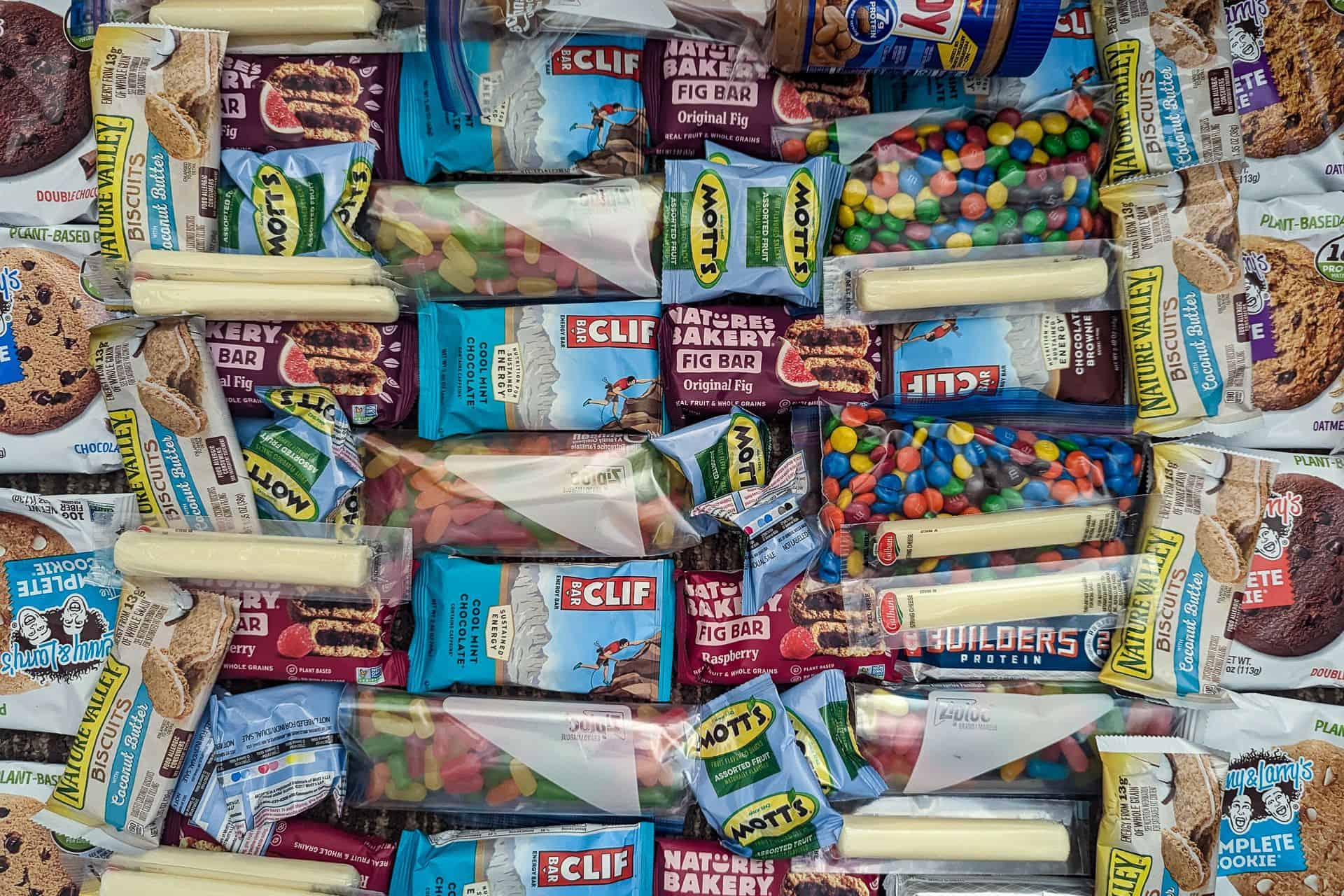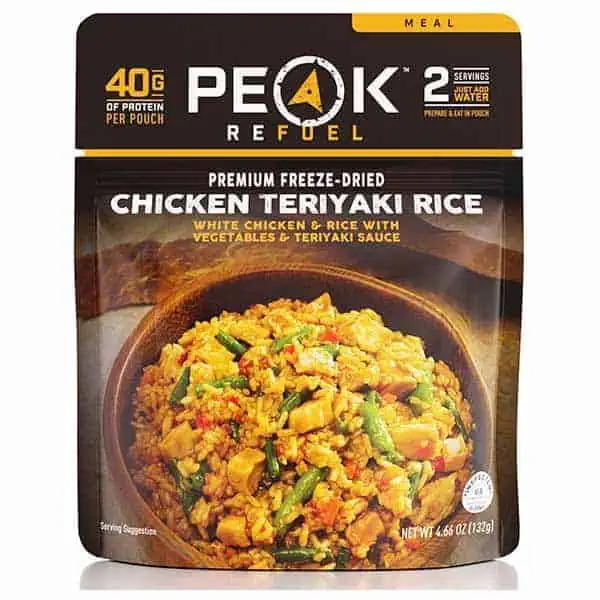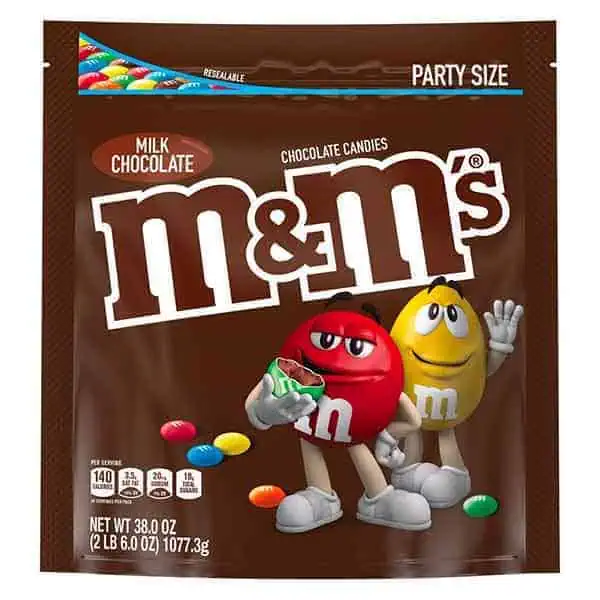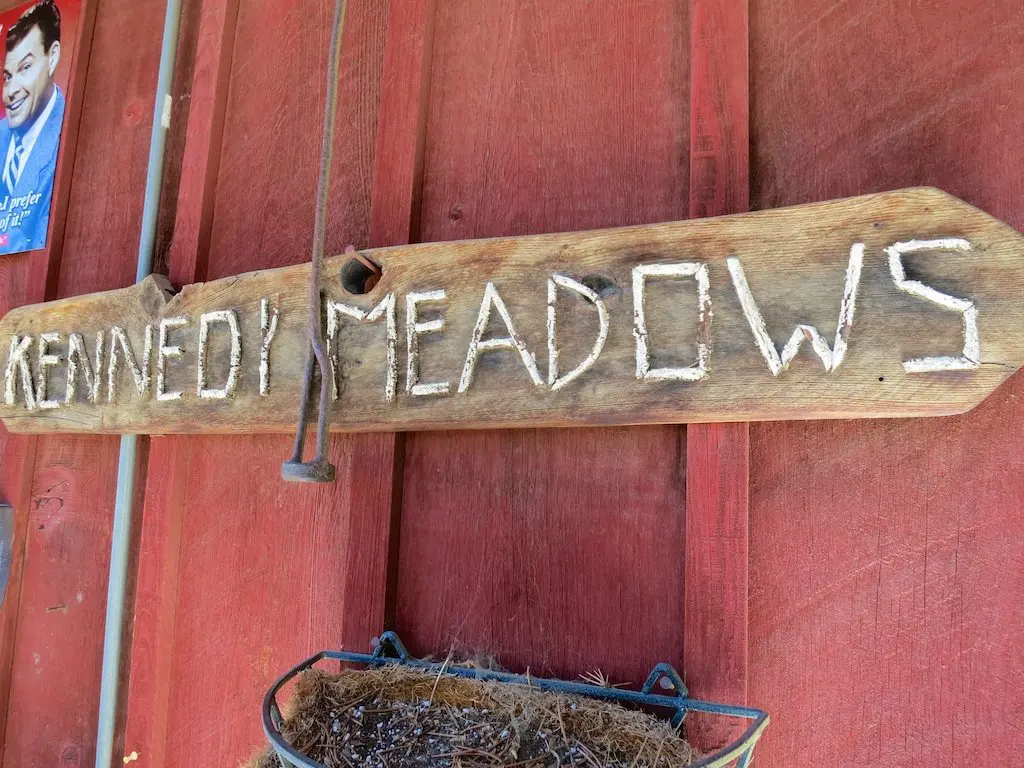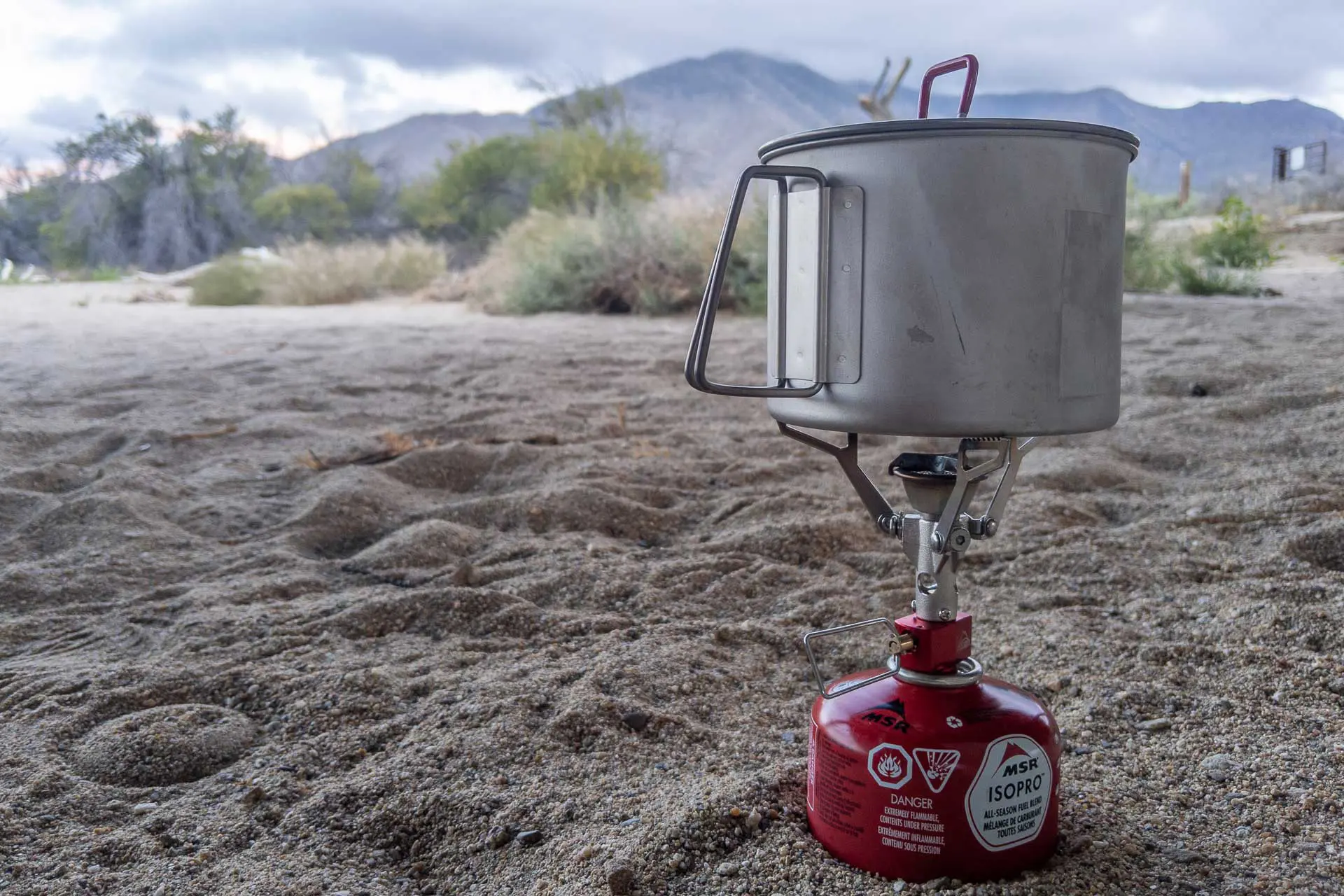Pacific Crest Trail Resupply Guide (2023 Survey)
The third installment of the Pacific Crest Trail Thru-Hiker Survey covers the PCT’s biggest (perceived) logistical issue: resupply. After hikers get their gear sorted, questions surrounding resupply become the object of PCT hiker fascination and internet probing.
What is PCT resupply? It’s the replenishment of the food (and other consumable items) carried in a hiker’s backpack. Basically, buying more food and supplies on the trail. Contrary to popular belief, PCT hikers commonly leave the trail and venture into towns to buy more food; they don’t carry all their food (for the entire hike) from the beginning. And, perhaps even more shockingly, the idea that thru-hikers subsist on a diet of foraged mushrooms and edible plants is a lie.
I often advise hikers to avoid resupplying before beginning a thru-hike, but I am only sometimes believed. Barring any dietary restrictions or a tight resupply schedule (i.e., you’re attempting a PCT FKT), there’s little reason to stress where you’ll buy food in Northern California in a few months. The Pacific Crest Trail runs society adjacent, and getting somewhere to pause and organize yourself and your hike isn’t difficult.
Using data from the 2023 Pacific Crest Trail Hiker Survey, I’ve compiled the following picture of what resupply looks like for a Pacific Crest Trail thru-hike. Hopefully, this helps all you would-be PCT thru-hikers rest a little easier.

Notes on the Data
- This year, there were 751 completed surveys. Hiking next year? Sign up to take the survey here.
- Some responses are sorted and colored – e.g., northbound or southbound. More on this below.
- The Pacific Crest Trail and thru-hiking generally use acronyms and jargon. If anything needs to be clarified, the thru-hiker glossary may help. Please comment if you still can’t find what you’re looking for.
- I ask that respondents do their best to respond accurately. Not every hiker answers every question, and not every answer is guaranteed 100% accurate (e.g., someone may report sending 8 instead of 9 resupply boxes).
- I refer to survey respondents collectively as this year’s “class.” Remember, this is a sample (albeit a large one) and not a comprehensive survey of every person on the PCT.
- These results invoke basic statistics. To maximize your time here, familiarize yourself with average, median (M), and standard deviation (σ).
- For stats requiring the length of the PCT for a calculation (e.g., mileage/day), I use 2,655.2 mi / 4,273.1 km (from the FarOut Guides PCT app).
- More detailed posts focused on PCT Gear (including breakdowns of women-specific and couples’ gear), PCT Demographics, PCT Horror Stories, and PCT Advice in the coming weeks. If you would like to be notified of new surveys, click here.
Colors differentiating hiker segments:
- Thru-Hikers
- Northbound Thru-Hikers
- Southbound Thru-Hikers
- The number (1) is appended when only using data from hikers who completed the trail.
- The number (0) is appended when only using data from hikers who did not complete the trail.
If no color/label has been appended to a data point, I used all collected data (i.e., it includes section hiker data and data from hikers who did not complete the trail).
Resupply Strategy
When you reach a town or “resupply stop” along the Pacific Crest Trail, you have the following options:
- Buy a full resupply (replenish your food stocks from zero back to a level sufficient to get you to the next resupply point)
- Buy a partial resupply (boost your current stock to get you through to the next resupply point – i.e., get more snacks)
- Pick up a package from a post office or hiker-friendly place along the trail (like a hotel or trail angel) that you’ve sent ahead to yourself.
- Get a large enough meal to hold yourself over until the next town (some hikers are fond of doing this at the Cajon Pass McDonald’s).
- Skip the town entirely and crush miles to your next resupply.
Occasionally, options are limited to a gas station or an overpriced general store (which is where some hikers may prefer to send themselves packages). Other times, you’ll find yourself in a large town with a supermarket (this is an excellent place to get a resupply to send ahead somewhere).
Before delving into the “best” strategy for PCT resupply, I must warn you (again) not to fall into the trap of attempting to plan your entire hike ahead of time. It (probably) will not work out how you expect (although I’ve been proven wrong in the past).
Unless you have specific dietary restrictions or a compelling reason to do so, there is little reason to plan your resupply stops ahead of time. It’s like worrying about how you’ll get home when you reach the northern/southern terminus; it doesn’t matter to you who has yet to walk a single step. There will be plenty of time on the trail to figure out your resupply, trust me (I’m an internet stranger, so you have to).
With this in mind, let’s examine the PCT Class of 2023’s resupply.
Resupply Boxes
Buying your food and prepping boxes before your hike can be tempting for the first-time thru-hiker – even the experienced but uncertain thru-hiker). A certain (false) sense of security comes from packing up resupply before the trail – a kind of “well, I’ve got all that sorted out.” Except on the trail, all that planning/sorting you did beforehand can prove more of a liability than an asset.
Plans change, post offices aren’t always open, boxes get lost, and hikes end early – a lot can happen between your start date and the resupply box you hop(ed) to retrieve weeks or months later.
On top of that, unless you’ve done a long-distance hike before (and based on the statistics from the PCT Survey – you probably haven’t), it can be hard to imagine what you, in a month (or two…or three…), are going to want to eat all day.
But since practically all hikers send at least one box, let’s examine how many boxes were sent, how many were prepped ahead of time, how frequently they were sent, and what was done before starting vs. on the trail.
Resupply Strategy
Resupply
- 1.0% – Mailed all resupplies
- 8.6% – Mailed most resupplies (> 50%)
- 52.7% – Mailed some resupplies (10-50%)
- 31.7% – Mailed a few resupplies (< 10%)
- 6.0% – Mailed no resupplies
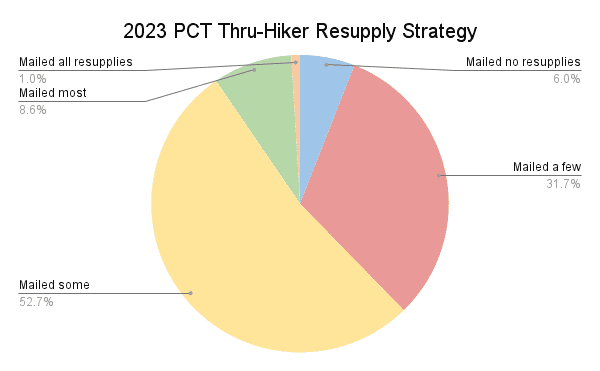
2023 Thru-Hikers
- 1.9% Mailed all resupply
- 8.5% Mailed most resupply (> 50%)
- 62.5% Mailed some resupply (10-50%)
- 17.6% Mailed a few resupply (< 10%)
- 9.4% Mailed no resupply
2022 Thru-Hikers
- 1.9% Mailed all resupply
- 7.4% Mailed most resupply (> 50%)
- 44.0% Mailed some resupply (10-50%)
- 37.2% Mailed a few resupply (< 10%)
- 9.5% Mailed no resupply
As with most years (every year), most hikers split their resupply between buying locally and sending boxes ahead.
Number of Resupply Boxes
This chart shows the number of resupply boxes sent by thru-hikers (1). If you’re paying attention, this is why the number of hikers who sent zero boxes, according to this graph, is different from the above graph.
Average: 8.5
Median: 7
σ: 6

Resupply Boxes Prepared Pre-Trail
As part of PCT resupply planning, many hikers prepare resupply boxes ahead of time. Here are the stats for the number of boxes that thru-hikers prepared before setting foot on the trail.
Average: 3.2
Median: 1
σ: 5.5
Note: You can buy and prepare resupply boxes from on the trail; you don’t need all your boxes ready before you begin your hike.
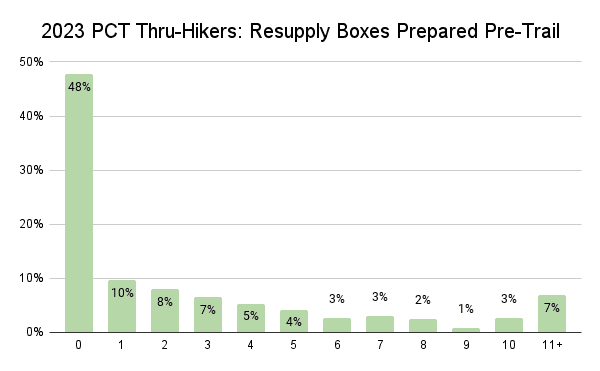
Boxes Mailed from the Trail
As many PCT hikers learn (and what I’m going to tell you now), you can mail yourself resupply boxes from the trail. This strategy allows you to have a better idea of your daily mileage and your food preferences after you begin hiking; it also lets you make sure not to waste time and money ahead of time prepping resupply boxes you may end up hating or never even using (if you have to get off the trail for some reason or skip a section due to fire, snow, or trail closures).
Here are the stats for the number of boxes that thru-hikers (1) sent to themselves while on the trail.
Average: 4.9
Median: 5
σ: 3.9

Thru-Hikers (1)
19%
The percentage of hikers who would have liked to have sent fewer resupply boxes.
Thru-Hikers (1)
9
The average number of resupply boxes sent by hikers would have liked to send fewer resupply boxes.
Thru-Hikers (1)
6.4%
The percentage of hikers who would have liked to have prepared no resupply boxes before their hikes.
Thru-Hikers (1)
13.3%
The percentage of hikers who said they would have liked to have sent more resupply boxes during a thru-hike
Thru-Hikers (1)
9
The average number of resupply boxes sent by hikers who said they would have liked to have sent more resupply boxes
Thru-Hikers (1)
2.6%
The percentage of hikers who said they would have prepared all their resupply boxes before beginning
This year’s average number of boxes sent was 8.5; the median was 7, people who sent 9 wanted to send more, and people who sent over 9 wanted to send fewer. Sounds like the average of 9 is what this year’s class wanted? Maybe 8? Perhaps 9? Maybe just not 9? Maybe (in reality) it depends entirely upon who you talk to.
Remember, there is no correct “number of PCT resupply boxes,” but there are places where a prepackaged and curated selection of your preferences will be preferable to the local selection.
Where to Mail PCT Resupply Boxes
As part of the PCT Survey, I asked hikers where they recommend sending a resupply box. Hikers’ motivations for sending a resupply box to a location on the trail can range from “the selection is bad, and everything is expensive” to “the store owners are awful people.” Regardless of their reasons, here’s where the PCT Class of 2023 thinks you should send yourself resupply boxes.
If there’s any confusion, the locations are listed in descending order (not geographical order). The percentages reflect the percentage of this year’s class who indicated that they would “definitely send a resupply box” to each location. Remember, this year’s class agreed upon(?) sending nine resupply boxes; I’ve included 10 to give you options (because, you know, hike your own hike, etc).
Suggest Mailing Resupply
- Stehekin* (Washington) 69.2%
- Crater Lake National Park (Oregon) 40.7%
- Kennedy Meadows** (Sierra) 39.5%
- Shelter Cove Resort (Oregon) 39.5%
- Snoqualmie Pass (Washington) 34.0%
- White Pass (Washington) 31.8%
- Stevens Pass/Skykomish (Washington) 27.3%
- Hikertown (Desert) 21.9%
- Seiad Valley (Northern California) 17.9%
- Kennedy Meadows North (Northern California) 17.4%
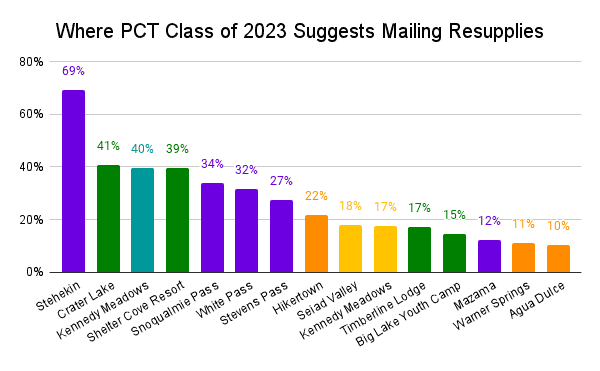
Note: 8.1% of thru-hikers (1) suggest mailing zero resupply boxes.
*This is the fifth year Stehekin has been (overwhelmingly) at the top of the list.
**Kennedy Meadows is where most (northbound) hikers begin carrying bear canisters. What is the most common bear canister every year on the PCT? The BV500. I’m a fan of the BV450 (but I own a Scout since I find myself in bear territory frequently), but more on that in the gear guide.
Before you plan all of your boxes and resupply stops, remember that for the first 1,700 mi / 2,700 km of the Pacific Crest Trail (assuming a northbound thru-hike), the PCT Class of 2023 suggests you send three boxes.
Many hikers don’t realize you can easily send boxes from towns on the trail (instead of preparing your boxes ahead of time). You are not committed to your plans when you begin the trail; if you have (for some reason) planned every one of your stops, there’s no reason you have to stick to that plan.
The PCT is long. But it simply connects a series of smaller trails between resupply stops. Nothing is stopping you from going to a supermarket, buying yourself delicious hiker food, and mailing it to yourself further up the trail (unless it’s Sunday because the post office is closed on Sunday – and sometimes Monday – which may sound unimportant now but will be an essential thing to remember while on the trail).
For the sake of simplicity, suppose you’re strictly following the averages of this year’s PCT class. The number of resupply boxes that you will send to each section of the PCT is:
- Desert: 1
- Hikertown
- Sierra: 1
- Kennedy Meadows
- Northern California: 2
- Seiad Valley, Kennedy Meadows North
- Oregon: 2
- Crater Lake National Park, Shelter Cove Resort
- Washington: 4
- White Pass, Snoqualmie Pass, Stevens Pass/Skykomish, Stehekin
Changes to PCT Resupply Strategy
To help future Pacific Crest Trail hikers figure out a successful PCT resupply strategy, I ask hikers what they would have changed regarding resupply. This year, 71.6% of thru-hikers said they would change something about their resupply strategy.
Here are the responses of those who said they would like to change something.
- 24.5% – Include more variety in their resupplies (Clif Bars and Stroopwafels will only get you so far)
- 22.7% – Send fewer resupply boxes over the course of the trail (9 was the average number of boxes sent by these hikers)
- 20.9% – Mail resupply boxes from on the trail instead of ahead of time
- 19.4% – Send more resupply boxes over the course of the trail (9 was the average number of boxes sent by these hikers)
- 18.3% – Include healthier food in their resupplies (yes, you can survive on M&M’s – but should you?)
- 16.7% – Include less food in their resupplies (the challenge of how much food to buy remains constant over the course of the trail)
- 10.5% – Resupply more frequently (more frequent resupplies means less weight carried – but also more time in town)
- 8.0% – Resupply less frequently (less frequent means longer distances between resupplies)
- 8.0% – Prepare no resupply boxes ahead of time
- 5.1% – Send zero resupply boxes
- 3.6% – Send more food in their resupplies
- 3.1% – Prepare all their resupply boxes ahead of time
- 2.0% – Send all resupply as boxes
Favorite Hiker Meals & Snacks
Another Pacific Crest Trail resupply consideration? What foods are you going to be resupplying with?
I would love to eat a Costco-sized bag of M&M’s with a large brick of cheese and a bottle of Sriracha for each section of trail, but I’ve been told this isn’t healthy (and 22% of PCT hikers said they wish they had resupplied with healthier food).
What do PCT hikers eat? Berries, insects, dirt, fallen PCT hikers? Obviously. But there’s so much more on offer at (most of the) PCT resupply stops.
Here are this year’s favorite dehydrated meals and backpacking snacks.
Favorite Backpacking Meals
- Peak Refuel Meals 32.3%
- Knorr Rice Sides 29.1%
- Backpackers Pantry Meals 25.2%
- Mountain House Meals 23.1%
- Good To-Go Meals 14.9%
- AlpineAire Foods 8.0%
- Patagonia Provisions 4.8%
- Greenbelly Meals 3.8%
- Heather’s Choice 3.6%
- Fernweh Food Company (out of business 😞)
Favorite Backpacking Snacks
- M&M’s 35.2%
- Snickers Bars 31.9%
- Potato Chips 29.5%
- Lenny & Larry’s Complete Cookies 26.6%
- Peanut Butter 26.1%
- Trail Mix 21.5%
- Clif Bars 19.4%
- Nature’s Bakery Fig Bars 18.4%
- Pop-Tarts 17.8%
- Bobos Oat Bars 19.3%
How Frequently to Resupply
Predicting (with any degree of accuracy) where you will resupply before beginning a thru-hike is something many hikers attempt to do despite my telling them it’s unnecessary. Do you know how long it will take to walk 100 mi / 160 km two months into your hike with three days of unscheduled rain and too much food in your pack?
The weather, your physical condition, the people you’re with, where you’ve just come from, where you’re going, and many other factors make this a (somewhat) educated guess at best.
Maybe you’re going to prefer carrying more food and resupplying less often. Maybe you’ll prefer a lighter load with more frequent stops in town. Maybe you’ll be injured or quit in the first week (or die), and none of this will even matter.
So, what’s the right balance between resupplying and hiking? It’s different for everyone. This is a response that many of you may not want to hear, but it is also the most accurate response I can offer you. That said, here’s a look at this year’s hiking resupply.
Thru-Hikers (1)
158
The average number of days it took hikers to complete the PCT
(M = 149 | σ = 22)
Thru-Hikers (1)
20
The average number of zero days taken during a thru-hike
(M = 18 | σ = 11.2)
Thru-Hikers (1)
16
The average number of nearo days (low mileage days)
(M = 15 | σ = 8.9)
Northbound Hike Breakdown
- 48 – Average days hiking the Desert
- 38 – Average days hiking the Sierra
- 30 – Average days hiking Northern California
- 23 – Average days hiking Oregon
- 27 – Average days hiking Washington
- 160 northbound (1) – Average days to complete the PCT
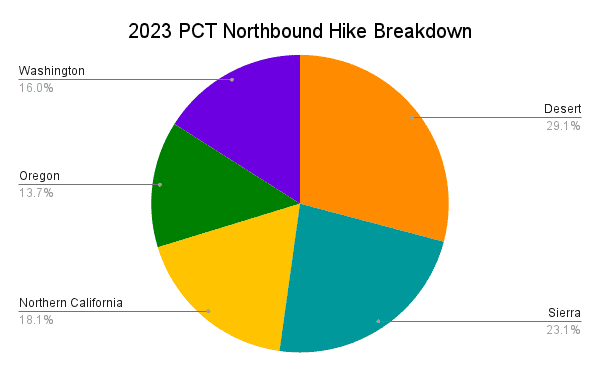
Southbound Hike Breakdown
- 34 – Average days hiking Washington
- 23 – Average days hiking Oregon
- 25 – Average days hiking Northern California
- 25 – Average days hiking the Sierra
- 35 – Average days hiking the Desert
- 121 southbound (1) – Average days to complete the PCT
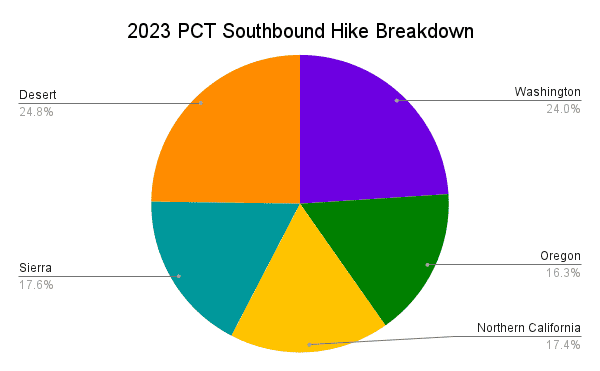
Thru-Hikers (1)
29
The average number of resupplies over the entire trail
(M = 29 | σ = 7.7)
Thru-Hikers (1)
5.9
The average number of days between resupplies
(M = 5.3 | σ = 2.1)
Thru-Hikers (1)
100.3
The average number of miles between resupplies (161.4 km)
(M = 92 mi / 148 km | σ = 35 mi / 56 km)
Average Resupplies per Section
- 9.1 Desert (M=9)
- ~ every 77 mi / 124 km
- 5.2 Sierra (M=5)
- ~ every 75 mi / 121 km
- 7.5 Northern California (M=7)
- ~ every 83 mi / 134 km
- 5.8 Oregon (M=6)
- ~ every 85 mi / 137 km
- 5.2 Washington (M=5)
- ~ every 99 mi / 159 km
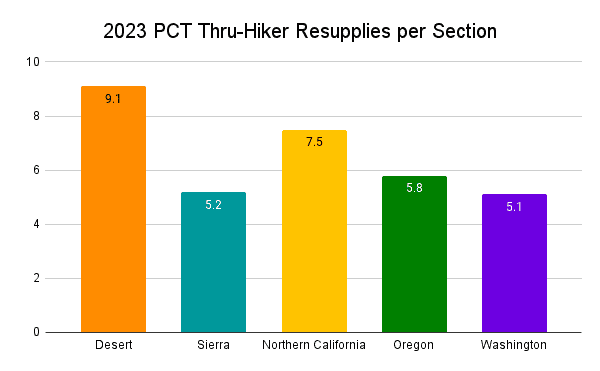
Stretches between resupply can vary greatly (for example, if you want to attempt a Kennedy Meadows to VVR resupply). Some will be much longer (or shorter) than others, but this should give you a rough idea of what to expect.
Average PCT Resupply Plan
Based on survey responses, we can assemble an “average” Pacific Crest Trail hiker’s resupply for a 2023 thru-hike. Below is a list of all the PCT resupply stops where hikers stopped this year, accompanied by the percentage of hikers who stopped at each location.
Locations are listed in geographical order from Mexico to Canada (that’s south to north), and again, I use the following colors to indicate each resupply stop’s popularity: over 75%, 50-75%, 25-50%, and below 25%.
Desert Resupply
- ⛺ Campo – 13.4%
- ⛺ Lake Morena – 15.9%
- ⛺ Mount Laguna – 47.0%
- Julian – 78.4%
- Ranchita BODEGA (formerly Montezuma Valley Market)- 36.4%
- ⛺ Warner Springs – 41.4%
- ⛺ Paradise Cafe – 13.2%
- Anza – 1.1%
- ⛺ Idyllwild – 91.8%
- Cabazon – 32.9%
- Banning – 16.6%
- Palm Springs – 5.7%
- Alpine Village Inn – 0.2%
- ⛺ Cajon Pass – 22.3%
- Big Bear City – 36.4%
- Big Bear Lake – 61.4%
- Wrightwood – 89.5%
- ⛺ Acton KOA – 25.0%
- Acton – 38.6%
- ⛺ Agua Dulce -35.5%
- Palmdale – 5.4%
- Lancaster – 4.3%
- ⛺✉️ Hikertown -32.1%
- Wee Vill Market -35.0%
- Tehachapi – 94.3%
- Mojave – 2.1%
- Onyx – 0.4%
- Lake Isabella – 15.0%
- Kernville – 2.1%
- Ridgecrest – 38.9%
Sierra Resupply
- ⛺✉️ Kennedy Meadows* – 58.2%*
- Grumpy Bears Retreat – 10.3%*
- Triple Crown Outfitters – 45.7%*
- Lone Pine via Horseshoe Meadow – 26.2%
- Independence via Horseshoe Meadow – 1.1%
- Bishop via Horseshoe Meadow – 8.1%
- Lone Pine via Kearsarge Pass/Onion Valley – 7.8%
- Independence via Kearsarge Pass/Onion Valley – 8.1%
- Bishop via Kearsarge Pass/Onion Valley – 55.2%
- Muir Trail Ranch – 10.6%
- Bishop via Bishop Pass/South Lake – 33.2%
- Bishop via Piute Pass/North Lake – 7.5%
- Vermilion Valley Resort (VVR) – 21.5%
- ⛺ Red’s Meadow – 8.1%
- Mammoth Lakes – 77.7%
- ⛺ Tuolumne Meadows** – 3.3%
- Yosemite Valley – 27.3%
- Lee Vining – 3.9%
- Bridgeport – 3.6%
- Kennedy Meadows North – 78.6%
- Pinecrest – 7.8%
- Strawberry – 1.7%
- Markleeville – 1.7%
*All these locations are located in Kennedy Meadows (South) – at the same point in the PCT
**The Tuolumne Campground is undergoing renovations and may be closed in 2024. The store will operate at a reduced capacity. The (seasonal) post office will still be operating.
Northern California Resupply
- ⛺ Echo Lake – 3.2%
- South Lake Tahoe – 83.3%
- Stateline – 0.3%
- Sacramento – 1.6%
- Tahoe City – 2.4%
- Soda Springs – 3.2%
- Truckee – 45.0%
- Reno – 8.8%
- ⛺ Sierra City – 70.0%
- Quincy – 48.5%
- Chico – 1.3%
- Chester – 75.6%
- Bucks Lake – 10.3%
- Caribou Crossroads – 0.3%
- ⛺ Belden – 19.4%
- Redding – 2.4%
- ⛺ Old Station – 30.5%
- ⛺ Burney Falls – 9.8%
- Burney – 70.6%
- ⛺ Castella – 7.7%
- Dunsmuir – 30.0%
- Mount Shasta – 62.3%
- Regeneration Base Camp – 0.8%
- Etna – 79.8%
- ⛺ Seiad Valley – 64.2%
Oregon Resupply
- ⛺ Callahan’s – 7.7%
- Ashland – 81.9%
- ⛺ Hyatt Lake Resort – 3.5%
- Medford – 9.8%
- ⛺ Fish Lake Resort – 15.5%
- ⛺ Lake of the Woods Resort – 2.4%
- ⛺✉️ Crater Lake (Mazama Village) – 86.3%
- ⛺ Diamond Lake Resort – 4.1%
- Chemult – 2.0%
- ⛺✉️ Shelter Cove Resort – 73.4%
- Odell Lake Resort – 3.5%
- ⛺ Elk Lake Resort – 14.0%
- Eugene – 1.8%
- Sisters – 18.1%
- Bend – 62.3%
- ⛺ Big Lake Youth Camp – 23.6%
- ⛺ Olallie Lake Resort – 22.0%
- Salem – 0.4%
- ⛺ Government Camp – 14.5%
- ⛺ Timberline Lodge – 39.7%
- ⛺ Cascade Locks – 58.9%
- Hood River – 27.1%
- Portland – 15.9%
Washington Resupply
- Trout Lake – 76.5%
- ⛺✉️ White Pass – 76.7%
- Packwood – 12.7%
- ⛺✉️ Snoqualmie Pass – 86.8%
- ⛺✉️ Stevens Pass – 51.6%
- Skykomish – 17.5%
- Seattle – 11.7%
- Monroe – 0.4%
- Wenatchee – 6.9%
- Leavenworth – 55.3%
- Chelan – 3.4%
- ⛺✉️ Stehekin – 76.9%
- Winthrop – 5.0%
- Mazama – 30.2%
✉️ Stops where this year’s class suggests sending resupply boxes to
⛺ Stops that can be reached without hitchhiking (i.e., they’re either on the trail or a relatively short – and relatively safe – detour)
Based on this information, how would our average Pacific Crest Trail thru-hiker have used these 29 resupply stops? It would resemble the following (note: names in bold indicate locations where hikers suggest mailing a resupply box).
For the mileage of each stop, I use the FarOut Guides PCT app.
Desert Resupply
- Mile 42: Mount Laguna
- Mile 77: Julian
- Mile 179: Idyllwild
- Mile 266: Big Bear Lake
- Mile 363: Wrightwood
- Mile 444: Acton
- Mile 530: Wee Vill Market
- Mile 566: Tehachapi
Sierra Resupply
- Mile 703: Kennedy Meadows
- Mile 790: Bishop via Kearsarge Pass/Onion Valley
- Mile 908: Mammoth Lakes
- Mile 1018: Kennedy Meadows North
Northern California Resupply
- Mile 1093: South Lake Tahoe
- Mile 1197: Sierra City
- Mile 1332: Chester
- Mile 1412: Burney
- Mile 1502: Mount Shasta
- Mile 1601: Etna
- Mile 1657: Seiad Valley
Oregon Resupply
- Mile 1720: Ashland
- Mile 1822: Crater Lake (Mazama Village Store)
- Mile 1908: Shelter Cove Resort
- Mile 1985: Bend
- Mile 2149: Cascade Locks
Washington Resupply
- Mile 2232: Trout Lake
- Mile 2298: White Pass
- Mile 2396: Snoqualmie Pass
- Mile 2467: Stevens Pass/Skykomish
- Mile 2575: Stehekin
Note: This is for educational purposes only and is not necessarily a good (or decent) resupply strategy. Please do not blindly follow this; instead, use it as a guide.
Between many resupply stops, you’ll pass places to get a meal (e.g., Timberline Lodge in Oregon) or buy snacks (e.g., Mount Laguna in the desert). Remember that this article is meant to gently guide you towards a more successful resupply plan (whatever that means – since, as I’ve already told you, planning resupplies is not a wise time investment).
Favorite (& Least Favorite) Resupply Stops
The Pacific Crest Trail is mostly about hiking, but the towns along the trail also play a role in the PCT experience. This is why I ask about hikers’ favorite and least favorite resupply points. When asking this question, I specify that “favorite/least favorite” means where hikers most/least enjoyed, not which locations had the best/worst resupply options (although these could be the same).
Here’s what hikes came up with (for each section).
Favorite Resupply Stop
Idyllwild, CA
Desert (50.7%)
Least Favorite Resupply Stop
Hikertown, CA
Desert (20.7%)
Favorite Resupply Stops
- Desert: Idyllwild (50.7%)
- Sierra: Bishop (49.0%)
- Northern California: Etna (33.4%)
- Oregon: Ashland (46.3%)
- Washington: Stehekin (27.1%)
Runners-Up
- Desert: Wrightwood (38.0%)
- Sierra: Kennedy Meadows (23.4%)
- Northern California: Mount Shasta (20.2%)
- Oregon: Bend (38.5%)
- Washington: Leavenworth (25.1%)
Least Favorite Resupply Stops
- Desert: Hikertown (20.7%)
- Sierra: Grumpy Bears Retreat (6.6%)
- Northern California: Kennedy Meadows North (12.5%)
- Oregon: Crater Lake National Park (10.3%)
- Washington: Snoqualmie Pass (9.0%)
Runners-Up
- Desert: Cabazon (14.1%)
- Sierra: Independence (3.2%)
- Northern California: Chester (8.8%)
- Oregon: Shelter Cove Resort (8.8%)
- Washington: White Pass (6.4%)
Hitchhiking to Town
What about hitchhiking to resupply stops?
You may not realize it, but hitchhiking can play a big role on the Pacific Crest Trail. It’s not unusual (and is actually quite common) for hikers to hitchhike to town to buy or pick up resupplies.
As part of the PCT Survey, I ask hikers what resupply stops (if any) they had difficulty hitchhiking to from the trail. The top responses were (from south to north).
Difficult Hitches
- Etna (Northern California) 7.4%
- Leavenworth (Washington) 6.2%
- Wee Vill Market (Desert) 5.4%
- Kennedy Meadows North (Northern California) 4.7%
- Lone Pine (Sierra) 4.7%
- Chester (Northern California) 4.5%
- Bend (Oregon) 4.2%
- Cabazon (Desert) 4.0%
- Stevens Pass/Skykomish (Washington) 3.7%
- Bishop (Sierra) 3.5%
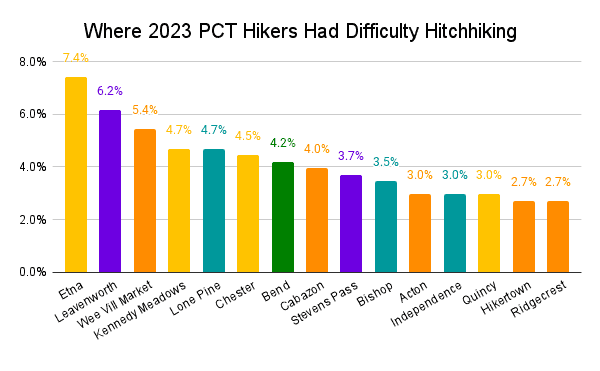
Note: 52.2% of thru-hikers (1) didn’t have trouble hitchhiking, and 0.5% did not hitchhike.
Hitchhiking can be a very subjective/random experience. You may get a ride with the first car past at a place where others stand waiting for hours.
Don’t cry if nobody picks you up after an hour, don’t act inappropriately (e.g., flipping off) toward drivers who don’t pick you up (you don’t know their story), and remember there’s nothing wrong with calling a Lyft/Uber/taxis instead of hitchhiking (definitely an option at some trailheads).
Dietary Restrictions
Not all hikers can subsist on gas station beef jerky and trail mix. I asked hikers if they had dietary restrictions and what they were. Typically, I also ask hikers how much trouble they had adhering to these restrictions, but this question was omitted this year due to an error in the survey. You can see the results from last year here.
Dietary Restrictions
- 38.4% Yes
- 61.7% No
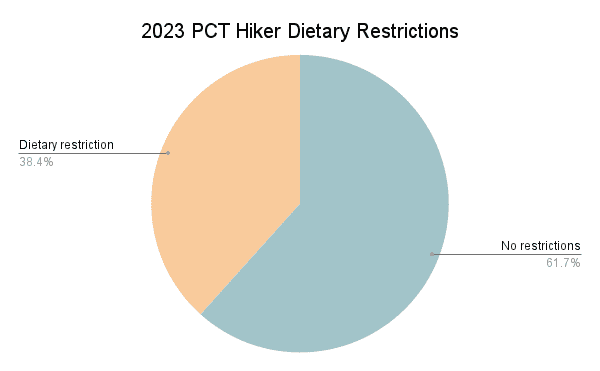
Specific Dietary Restrictions
- 46.9% – Vegetarian
- 17.5% – Dairy-free
- 15.5% – Vegan
- 12.4% – Beef-free
- 11.3% – Pescatarian
- 9.3% – Gluten-free
- 7.2% – Peanut allergy
- 4.1% – Tree-nut allergy
- 1.5% – Keto
- 1.0% – Diabetic
- 0.5% – Kosher
- 6.2% – Other

Note: These percentages are of hikers with dietary restrictions.
Resupply Advice
Enough with the numbers, colors, graphs, labels, and bulleted lists of places you may or may not have ever heard of. What did thru-hikers have to say about Pacific Crest Trail resupply? The following are advice, each from an individual hiker, regarding PCT resupply.
Remember, each is one person’s opinion; none should be taken as PCT gospel.
- Always check the next two to three towns ahead. It’s usually easier to send a box from a town where you can do a full resupply rather than sending them way before the hike.
- Send packages to stores or hotels rather than US Post Offices where you can; many post offices have short opening hours.
- Bring things you like! And always carry out town food for the first day leaving each town – you’ll thank yourself later.
- Depending on how particular you are, you don’t need to send any resupply boxes anywhere. You can get good enough resupplies along the way. We saw many hikers get delayed because they’d posted boxes to themselves and had to wait for open post offices with limited operating hours.
- Do not depend on hiker boxes. Think of them as bonus food.
- Find a good balance between what you crave and want to eat vs healthy/good for you or makes you feel good. Don’t pack out food you don’t like and don’t want to eat just because it’s healthy.
- Despite a lack of a notable dietary restriction, I made my food and sent resupply boxes for every resupply. Yes, you can absolutely avoid this, but I didn’t want the stress of shopping for food while in town. This also added the benefit of allowing friends and family to easily send treats or cards to include in my next resupply. Also, I liked my food way more than what was available to others at stores. It is not the best route for those without the support system to send them or the time to prepare food in advance, but I’m really happy with it for me.
- I prepared 100% of my food ahead of time, and I regret it. Even though I made all my dinners from scratch (15+ entrees), I was not too fond of the inflexibility of getting all of my food from the boxes. I would send some special treats next time, like Trader Joe’s and specialty coffee, but not all of my food.
- I’m a contrarian and resupply 100% by USPS. We all have different experiences. I’m a septuagenarian, and many of my idiosyncrasies are based on prior mountaineering expeditions and peak bagging experiences. Not having the same dinner meal for at least 21 nights in the field, trusting the post office over businesses. I validate and vet every mailing location by “Alexander Graham Bell.” For example, Paradise Valley Cafe never answered the phone after a dozen attempts. I scratched them. When you see the pile of boxes tossed on the floor, it would be easy to lose a box by accident or on purpose.
- It’s worth sending boxes for most of Oregon and Washington if you are on a budget. You will save the most by doing this ahead of time, but you can still save some by doing it in a bigger city on the trail (but you will not want to). If money’s not a factor, you’re good to resupply on the trail.
- If you have celiac, be prepared for repetitive meals if you are not sending boxes. That being said, I would recommend sending boxes to the smaller towns.
- Those who aren’t on a strict budget and are not picky can truly resupply at almost every resupply point without sending boxes. If you have specific dehydrated meals you like or bars, electrolyte gummies, NUUN tablets that you like/need, I’d suggest mailing those out in resupply boxes as not every time will have it or have enough variety, or it’s very expensive. Tuna packets, instant mashed potatoes, and ramen can be found almost anywhere.
But most of all – have fun out there! And don’t die.
Support the Survey
Every year, I get a lot of people asking how to support the surveys. Beyond sharing them with your close-knit bubble of weird hiker friends, the best way to support the survey is to contribute via Patreon. You’ll get access to exclusive posts, discount codes, live streams, and super, extra cool stickers so that everyone will know how cool you are.
If you’re not into Patreon, that’s cool; you can Venmo @halfwayanywhere, Cash app $halfwayanywhere, or PayPal moc.erehwynayawflah@tcatnoc
This is not expected. The data collected in the survey will always be free and accessible to everyone who wants/needs it. Your support is much appreciated and helps pay the website (and survey) bills.
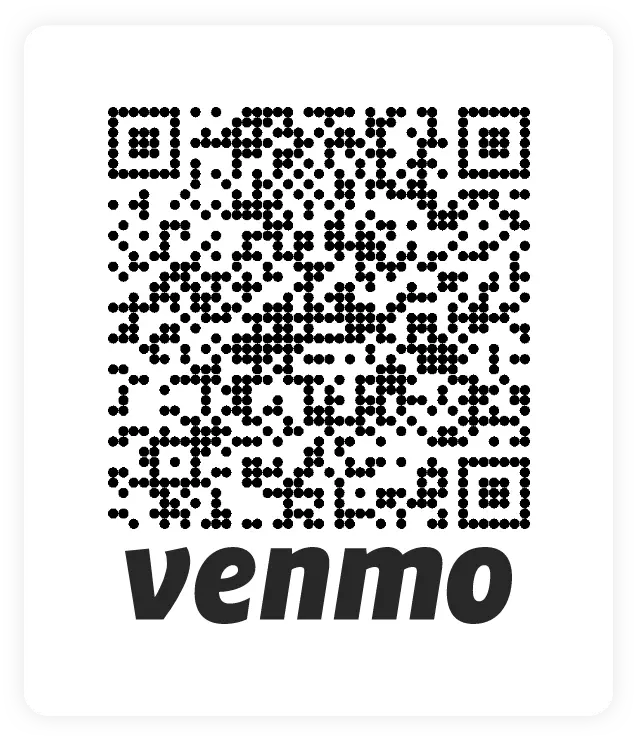


Pacific Crest Trail Survey Collection
If you can think of anything that would make this resupply information more useful (or any more resupply-related cross-referencing you would like to see), please comment and let me know.
For more on PCT Resupply, check out these posts.
Affiliate Disclosure: This page may contain affiliate links, which means I may receive small commissions for purchases made via these links at no additional cost to you. This helps pay the bills and keep the site up and running. Thank you for your support!
